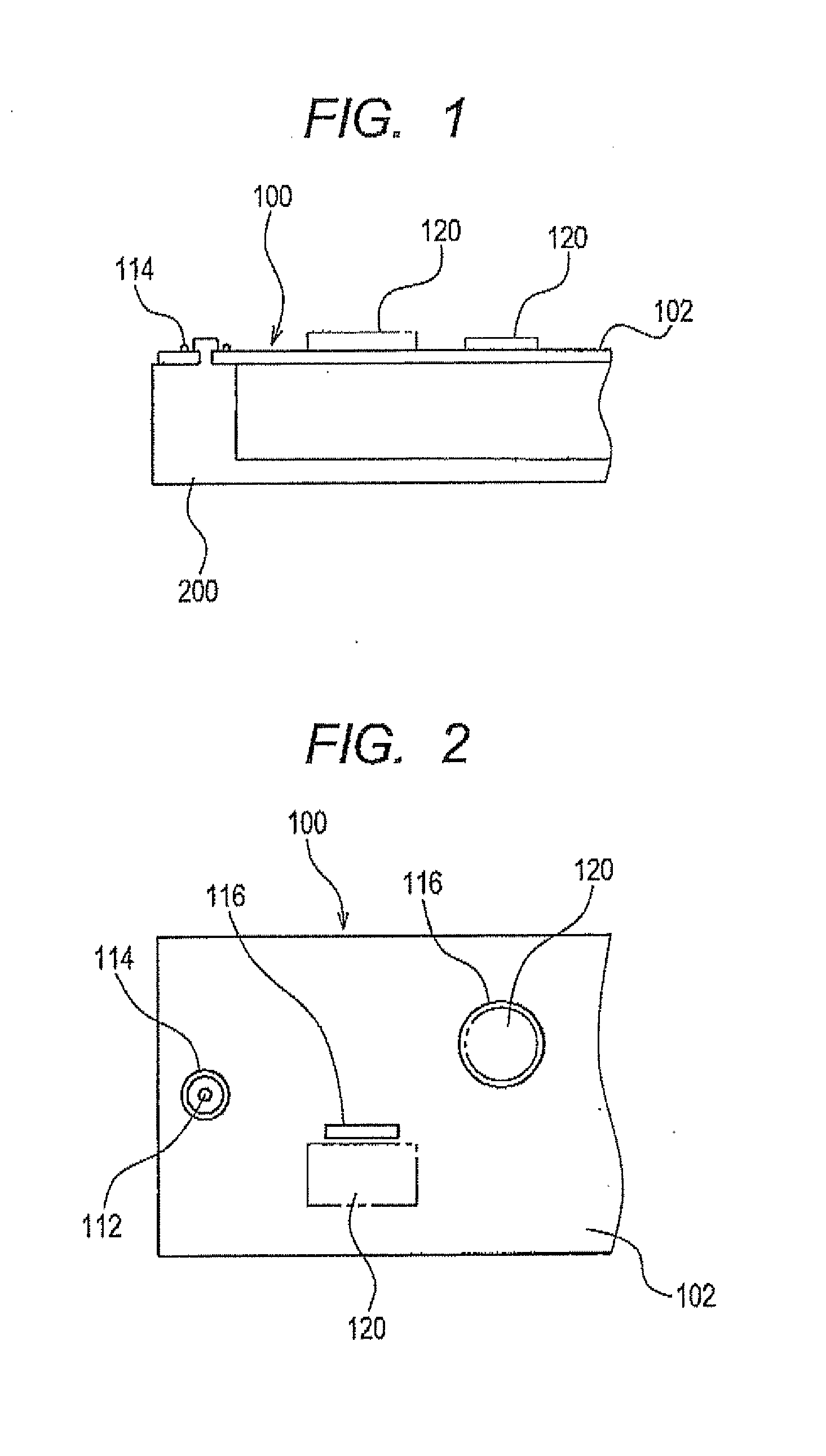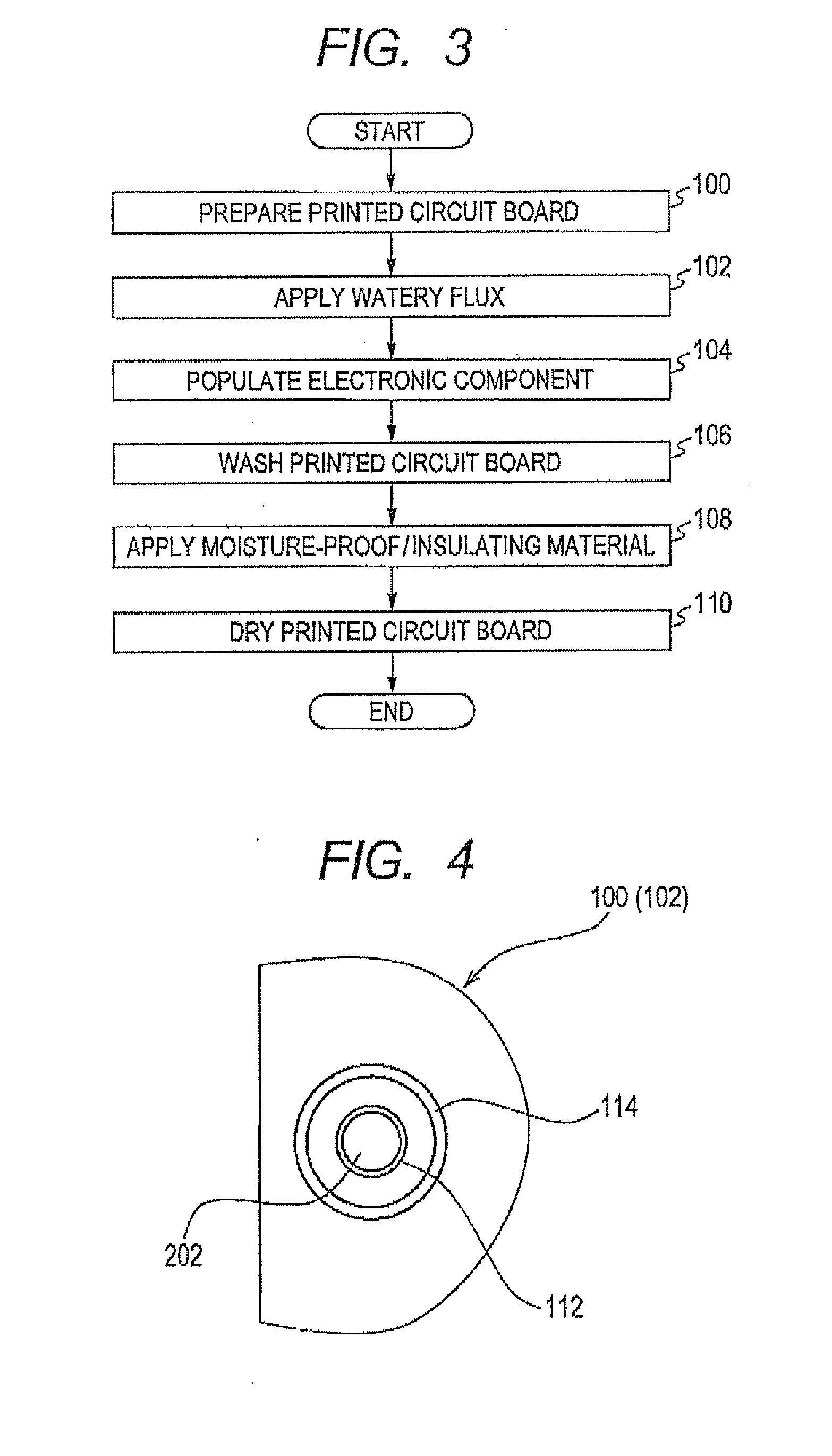Circuit board to be attached to support through thermoplastic staking
a technology of thermoplastic staking and circuit board, which is applied in the field of circuit boards, can solve the problems of increasing the production cost of the circuit board and the case body, and reducing the strength of fastening the circuit board to the case body. it is convenient to increase the total thickness of the printed layer, and achieves the effect of convenient increas
- Summary
- Abstract
- Description
- Claims
- Application Information
AI Technical Summary
Benefits of technology
Problems solved by technology
Method used
Image
Examples
Embodiment Construction
[0038]Referring to the drawings, wherein like reference numbers refer to like parts in several views, particularly to FIG. 1, there is shown a printed circuit assembly 100 which is secured to a case body 200 by means of thermoplastic staking (also called heat staking or riveting) according to an embodiment of the invention. FIG. 1 is a partially sectional view of the printed circuit assembly 100 attached to the case body 200. FIG. 2 is a plane view of FIG. 1.
[0039]The printed circuit assembly 100 is equipped with a printed circuit board 102 which is fixed to the case body 200 (i.e., a support) using the thermoplastic staking technique. The printed circuit board 102 has mounting holes 112 (only one is shown for the brevity of illustration). The printed circuit assembly 100 also includes a printed mounting hole surrounding layer 112 formed around the mounting hole 112, and printed component marks 116 each of which represents the location on the printed circuit board 102 where an elect...
PUM
 Login to View More
Login to View More Abstract
Description
Claims
Application Information
 Login to View More
Login to View More - R&D
- Intellectual Property
- Life Sciences
- Materials
- Tech Scout
- Unparalleled Data Quality
- Higher Quality Content
- 60% Fewer Hallucinations
Browse by: Latest US Patents, China's latest patents, Technical Efficacy Thesaurus, Application Domain, Technology Topic, Popular Technical Reports.
© 2025 PatSnap. All rights reserved.Legal|Privacy policy|Modern Slavery Act Transparency Statement|Sitemap|About US| Contact US: help@patsnap.com



